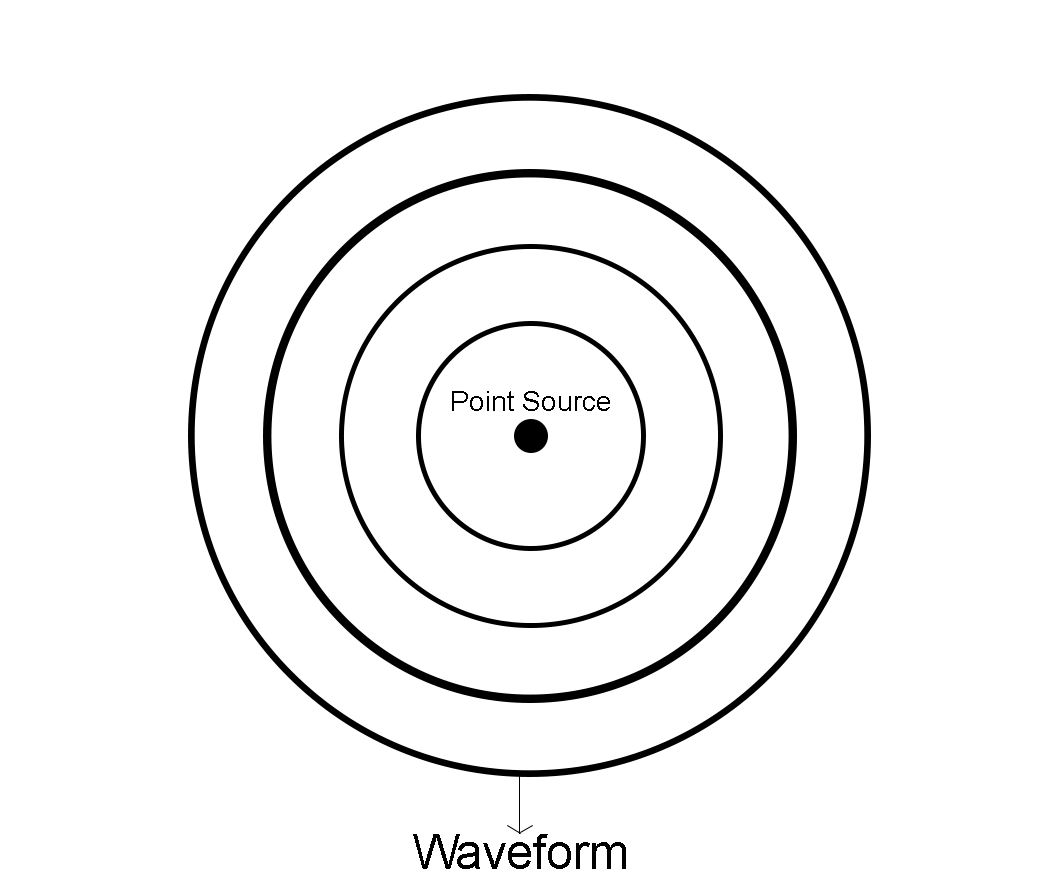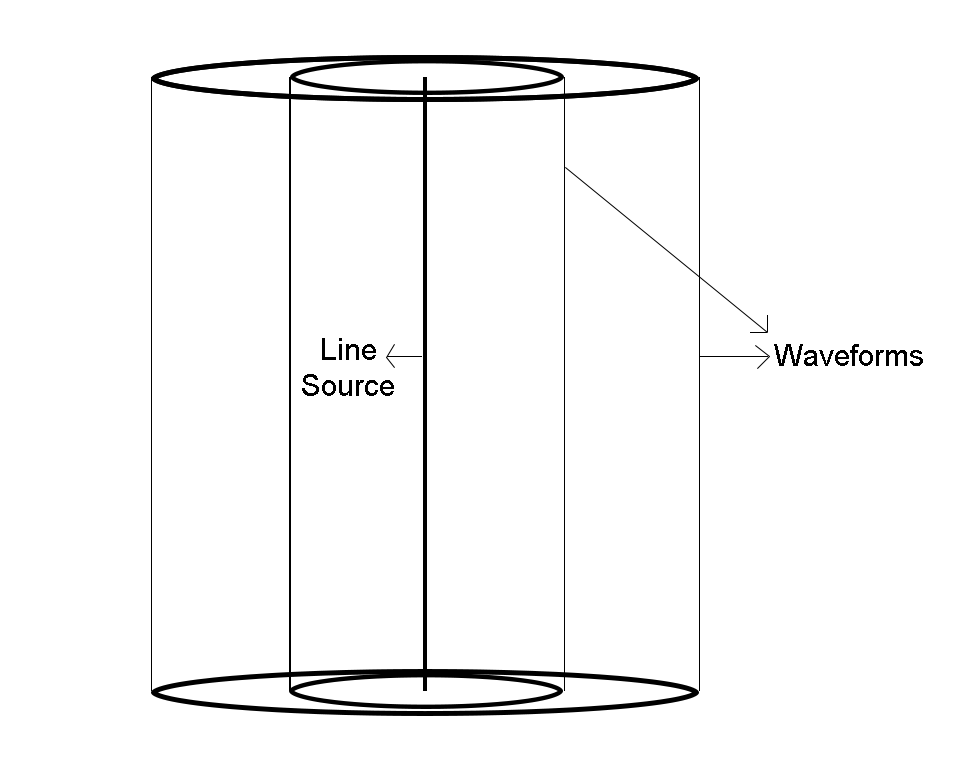Question
Question: What is the shape of the wavefront originating from A. A point source B. A line source?...
What is the shape of the wavefront originating from
A. A point source
B. A line source?
Solution
You can start by briefly explaining the wavefront. Then describe the spherical waveform formed by a point source and the cylindrical waveform formed by a line source along with the diagrams of the waveforms.
Complete answer:
Before discussing the shapes of wavefront originating from a point source and a line source, it will be beneficial to discuss what a wavefront is
Wavefront – If we consider a time-varying field we have a set (locus) of points in which all the particles have the same phase. When we join all these points we get what we call a waveform. This waveform moves with time and its dimension changes.
For a point source – For a point source, the waveform spreads in the form of a sphere, every point on the waveform is equidistant from the point source. Every point on this spherical waveform will have the same phase.
The wavefront of a point source is shown below

For a line source – For a line source, the waveform spreads in the form of a cylinder, every point on the waveform is equidistant from the nearest point on the line. Every point on this cylindrical waveform will have the same phase.
The wavefront of a line source is shown below

So, the correct answer is “Option A”.
Note:
In the solution above, we discussed how the wavefront propagates with time. A quick method to predict the propagation of a waveform is to use the Huygens-Fresnel principle, i.e. every point where a waveform disturbance reaches in itself becomes a source of spherical wavelets and emits secondary wavelets.
